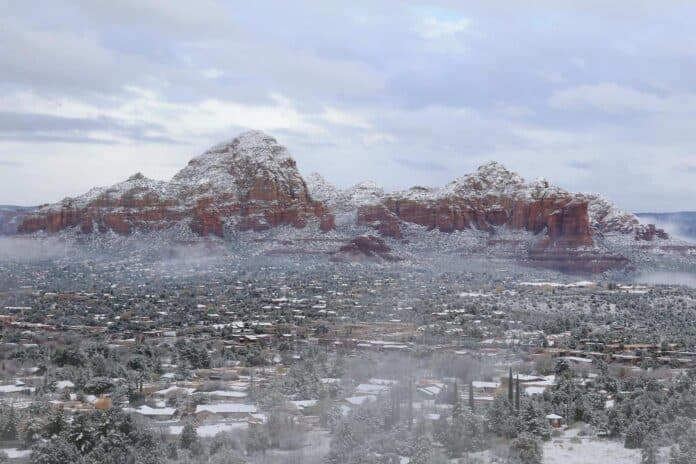The Arizona State Climate Office held its monthly webinar on Sept. 21, ahead of the end of the water year, which runs from Oct. 1 through Sept. 30, and the close of the monsoon on Sept. 30.
“Fortunately, this monsoon season was dry but not the driest. The 2020 ‘nonsoon’ season remains the precipitation loser,” Erinanne Saffell, director of the Arizona State Climate Office and the state climatologist, said during the update.
However, Phoenix did suffer its driest monsoon in history, receiving a mere 0.15-inch of rain at Sky Harbor International Airport. Saffell noted that the combination of higher temperatures and the lack of precipitation made “the atmosphere thirsty,” and caused expansion of longterm drought conditions in Maricopa County.
The lack of summer monsoon activity also meant the return of extreme and severe short-term drought in the southeast corner of the state and nearly all of Santa Cruz County, as most of those areas received less than half their average monsoon precipitation as tracked in the most recent Drought Monitor Report of Thursday, Sept. 28.
The Verde Valley remains classified as abnormally dry, a condition that expanded to include all of Yavapai County during the month of September.
The National Oceanic and Atmospheric Administration stated in its quarterly outlook for the western climate region that “31% of the western U.S. was in drought at the end of summer, with 3% in extreme drought and no areas of exceptional drought.
“Drought expansion during summer occurred across Arizona, New Mexico, southeast Utah, southwest Colorado and much of the Pacific Northwest.”
NOAA has forecast higher than average October temperatures for Arizona and most of the continental United States, along with an above-average chance of precipitation for the state. While the 2023 monsoon was largely considered a disappointment, the record winter precipitation was enough to bring the statewide average precipitation for October 2022 through August 2023 to 11.43 inches, which puts Arizona ahead of the short-term drought average of 11.25 inches. The short-term drought average is calculated from 1994, the year that long-term drought conditions began, while the long-term average for Arizona is 12.26 inches.
As of Sept. 30, the Sedona Airport had measured 12.05 inches of precipitation, Cottonwood’s station had measured 12.32 inches and the Yavapai County Flood Control District had measured 10.55 inches in Camp Verde since the beginning of the water year.
“We have been watching El Niño build up,” Saffell said. “It is still very active in the equatorial Pacific. The expectation is that it’ll remain active through our winter, so all the way into next February is the expectation. We know that El Niño statistically brings a wetter winter here in Arizona. We’ve had nine El Niño winters in our period of long- term drought, that’s [1994] to present, and seven of those El Niño events have been wetter than normal. So we’re very hopeful statistically that that will play out and we’ll have another wet winter.”






